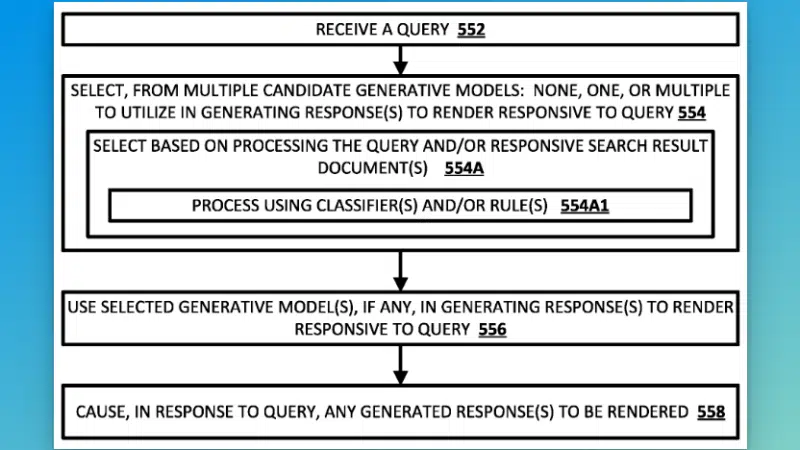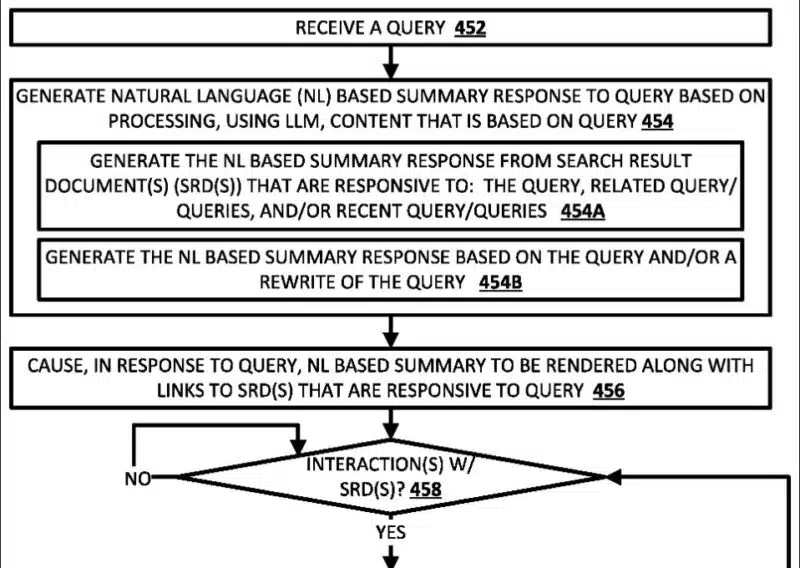Google patent describes how the Search Generative Experience works
This may be the first and only patent Google has related to SGE.
A patent granted to Google may describe how Google’s new Search Generative Experience works.
Google applied for the patent, “Generative summaries for search results”, on March 20, 2023. It was issued on September 26. The full version can be read here.
Abstract. The patent’s abstract reads:
“At least selectively utilizing a large language model (LLM) in generating a natural language (NL) based summary to be rendered in response to a query. In some implementations, in generating the NL based summary additional content is processed using the LLM. The additional content is in addition to query content of the query itself and, in generating the NL based summary, can be processed using the LLM and along with the query content—or even independent of the query content. Processing the additional content can, for example, mitigate occurrences of the NL based summary including inaccuracies and/or can mitigate occurrences of the NL based summary being over-specified and/or under-specified.”
Dig deeper. Juan González Villa wrote a very detailed and extensive deep dive on this patent. In the piece, The Patent Behind Google SGE, he writes “The patent, which describes how to “selectively use a large language model (LLM) to generate a natural language summary in response to a user query,” matches what we see and know about SGE today,” he wrote.
Diagrams. Here are some select diagrams from the patent:



Why we care. Reading this patent may help you better understand how the Search Generative Experience works. Keep in mind just because Google has patent, it doesn’t mean it’s used. Googlers apply for and receive approval on patents all the time.
This one is probably worth a weekend read, but don’t expect to find any SGE ranking secrets within.
Related stories